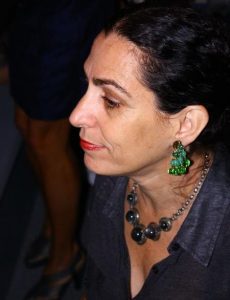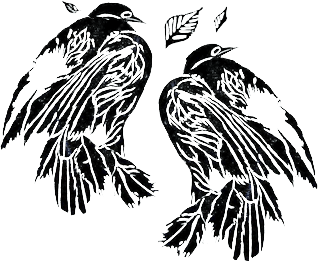Jesse Hauk Shera was a librarian and a prolific beautiful writer who has been dead quite a few years and with whom I am newly in love. Completely smitten. I often fall in love with the dead. In fact, I often wait for people to die before falling in love with them.
In a 1976 book titled, Introduction to Library Science: Basic Elements of Library Service, Shera talks the nuts and bolts of library work. The book itself isn’t anything to look at; it’s a homely, institution-blue textbook intended for library science students. The cover font is stamped-on Times New Roman and the type is oddly crammed onto the pages, as if the letters were asked to squeeze together to make room for an unanticipated dinner guest at the table. The publishers call themselves Libraries Unlimited, Inc., a kind of perfunctory name when we all know that giving names to things is one of life’s great pleasures. But the book itself? Jesse’s Introduction to Library Science: Basic Elements of Library Service, is very good. I recommend it for everyone. Pick it up and open to a random page and succumb to the inspiration of the organized, the advocates for knowing not only where things are, but where they should be.
Jesse Hauk Shera gets jargony: talks cataloging, classifying, organizing, systemizing. He introduces social epistemology, asks how it is we organize knowledge so it can be seen in an obvious way, like stars on a glow-in-the-dark map of the night sky. But dip under the text, and the jargon fades. What blooms up is the longing for patterns, the promise of connectivity. How, he asks, do things relate and interrelate, and how are connections made in order for things to be found and understood. He writes, “We live then, by familiarities of pattern.” We live by what we know, over and over again. Patterned, cataloged, connected. You see, there is always the reach for understanding and connection in the library world: the drive to relate one thing to another, often seemingly disparate things, to matchmake. I wouldn’t blame you, then, if you were thinking right now that Mr. Shera didn’t only write a textbook for library science students, but a self-help book, of sorts. A how-to on relating. A marriage catalog. And you might also be thinking that librarians themselves are not only go-to people but relationship people, knowing like they do how things fit together, being pattern-makers themselves. Because librarians understand what goes perfectly next to each other and on top of each other, and sometimes in each other, what belongs together, and, what doesn’t. In other words, librarians know full well what is on the shelf.
Okay, perhaps it’s a stretch to think librarians are relationship experts. Especially for those of you who know librarians, you know this is a stretch. Because we librarians are not known for our relationality. Many librarians become librarians because they don’t want to relate, to anybody, ever. When librarians shush you, it isn’t so much that they want quiet, as it is that they don’t want to hear you talk.
And I have to admit something further. The librarians who nitty-gritty know the ways in which things are and the ways in which things connect, the ones who understand the art of relating, are not your run-of-the-mill librarians. Not the children’s librarian and not the library director. Not the librarian sitting at the reference desk waiting by the phone for someone to call and ask her a question. Nope. The librarians who nitty-gritty know are the ones who not only don’t wait by the phone, they have their phones off the hook. The Catalogers. The catalogers, who don’t want to be asked, they just want to answer; who know the taxonomies, the build and exactness and place of things; the solitary, bristly, hunched, backroom-working, earphone-wearing catalogers. “If librarians are misfits,” the Chair of the library school at UCLA is fond of saying, “then catalogers are the misfits of misfits.” And, being a cataloger himself, he knows of what he speaks. Every librarian’s inner librarian, a cataloger.
Catalogers would never say that they have the goods on how to understand relationships in that simple and profound way so relationships can be understood. They would deny carrying the special salt. Nor do they know they are being helpful; that would only upset them. They are like therapists by accident.
I should distinguish. There are two kinds of catalogers: Descriptive and Subject. And they are not the same creatures.
Descriptive catalogers measure and count. They work in MARC authority records, lines 100 to 500, supplying information about title, author, publisher, material. Information about what is, that is: they speak only of the object in hand. The exact object. A book, say. Not the idea of the book, not its philosophy or aspiration or potential. Nor its iterations. That book. They take out a ruler and measure its length and width and depth, count the pages, note the date of publication, the edition, if it is a work in translation. They attend to any physical attributes that stand out: a glittery title on the cover, a red satin ribbon that serves as placeholder, or a letter folded into an envelope in the back of the book. The descriptive cataloger describes what is, like the Eastern sages philosophize, be mindful of what is instead of reaching around for what can be, or what you think should be. Live with what you’ve got. Descriptive catalogers don’t question the item in their hand, they just try to figure it out.
Subject catalogers, on the other hand, step into the ether. They seek out the pulp in order to understand the work before them. And then they provide a few access points for people to find the material. In the 600 lines of the MARC authority records, the catalogers make a few important notes. They are expected to expand on the visible, distinguish a work with descriptors. They don’t over tell. Like this: The Year of Magical Thinking: “Bereavement.” “Marriage.” Joan Didion, her glorious, bad-ass writing, the cigarette in her hand that is bigger than she is, her sparrowness, go unnoted, but lie in wait, to be found. When cataloging, “From the Life and Songs of the Crow,” the subject cataloger knows but does not note Ted Hughes’ childhood landscape of textile mills, the tragedy of the wives, the black crow “flying the black flag of himself,” and instead writes, “Poetry” “British Literature.” “Devonshire.” The cataloger notes, “Ted Hughes,” as subject himself.
It is a delicate act, isn’t it? Little must be said about a lot. If catalogers say too much about a work, and then someone goes to search for it, it might be lost in a field of like descriptors, indistinguishable. Say too little and there won’t be enough information to find it. But just enough information given and things will be found, associations made, the flash and sparkle of things connecting. Subject catalogers are therefore succinct in their work, spot-on, concise. No editorial or pomp. What is, is enough.
Catalogers have it figured out. I like their relationship advice, of which, of course, they are oblivious: point out the minimum while seeing the whole, appreciate what is there, understand without fuss, note that something needs mending but not alteration. And an awareness of the many, many patterns around us, familiar, but which still and always, yield mystery.
Jesse Hauk Shera was not a cataloger, but he did live in Cleveland, Ohio. At the same time that I lived in Youngstown, a mere 65 miles apart. We shared a grid for a time, the same dusk. He would have been in his Ford Fairlane, me in my stroller, we both had wheels, and no doubt we both liked books. Connected.
 Lisa Lepore is the library director at Antioch University Los Angeles. Lisa pursued a degree in librarianship largely out of a love of reading. She thinks about how reading affects and alters people and also how it can both support and subvert the status quo. She thinks there's nothing like a good book.
Lisa Lepore is the library director at Antioch University Los Angeles. Lisa pursued a degree in librarianship largely out of a love of reading. She thinks about how reading affects and alters people and also how it can both support and subvert the status quo. She thinks there's nothing like a good book.
